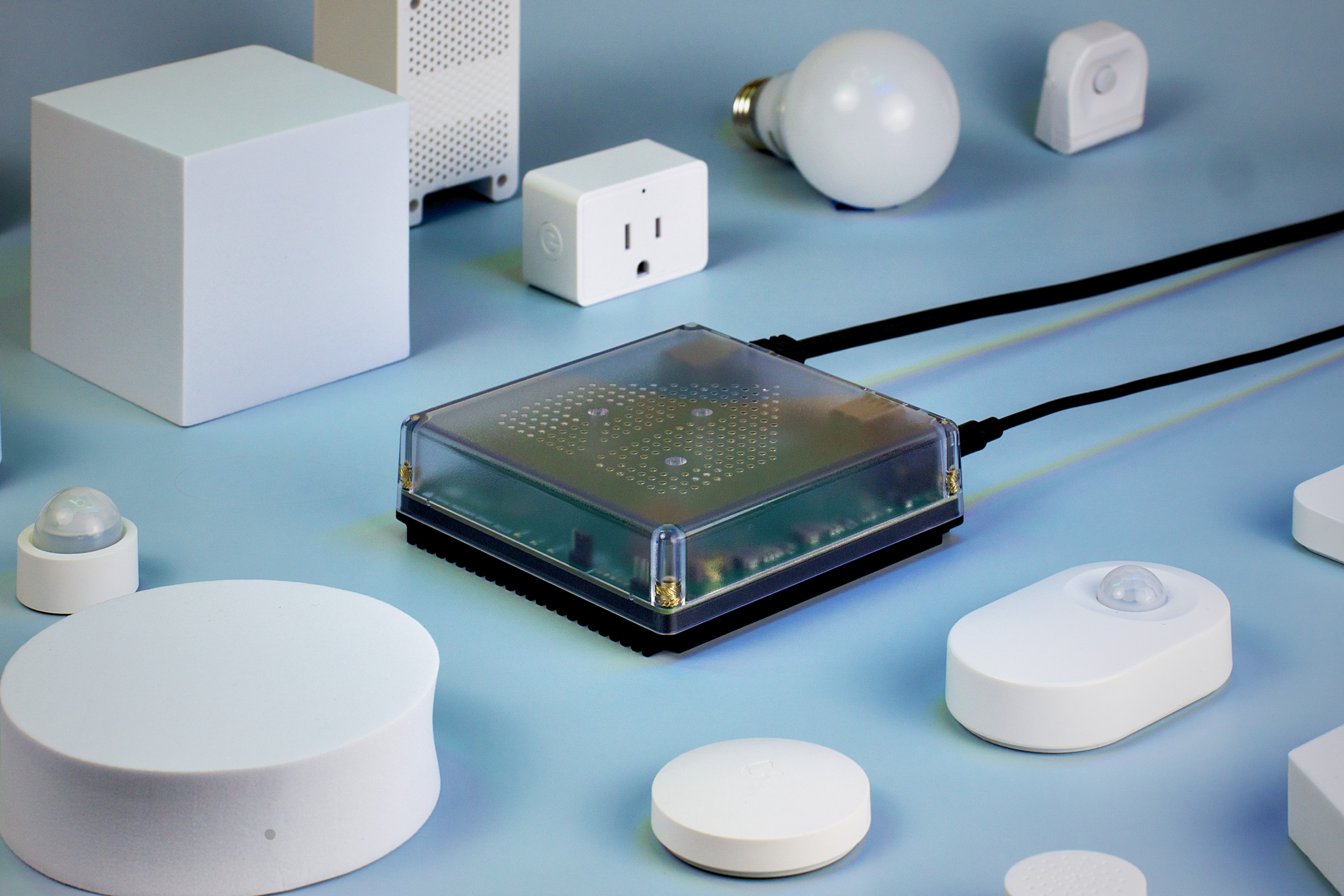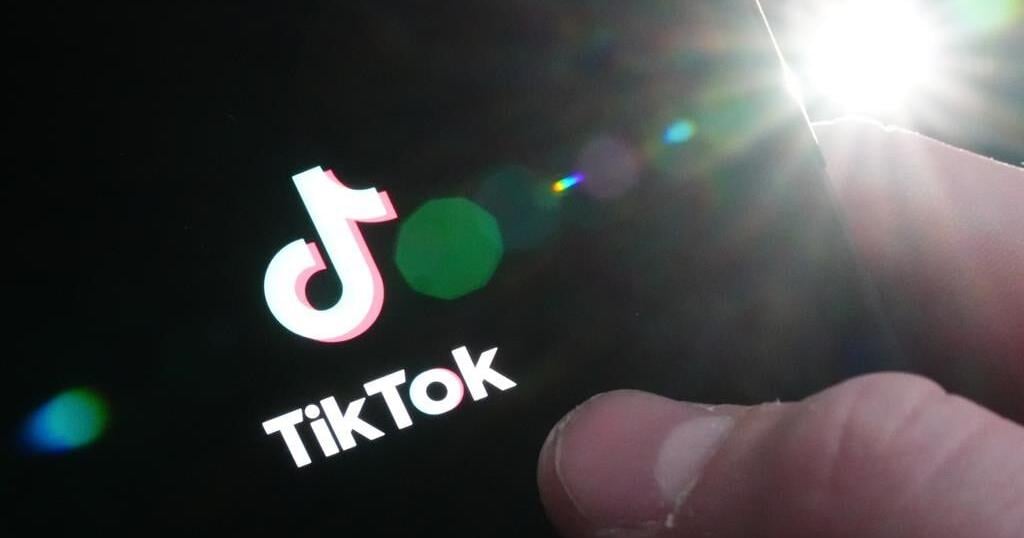Buy enough tech and you can’t escape the siren call of a smart home. Amazon practically throws Echo Dots at you. Google will sneak a Nest Mini in the box with almost anything you buy in its store. Good luck buying a new kitchen appliance that doesn’t beg to be connected to the internet. All of those come with platforms that are locked down and cloud-dependent, requiring you to bend to their corporate wishes to use them.
But for the last decade, Home Assistant has been the go-to software for privacy-focused nerds who want all the benefits that Apple, Google, and Amazon products provide with infinitely better flexibility and fewer security risks. And now, for the software’s 10th birthday, the people behind Home Assistant are introducing a new product in the hopes of extending it beyond the domain of nerds: the Home Assistant Green.
“Our ideal future, long term, is that we want for people to get a privacy-focused smart home is not only something rich people or nerds have access to,” Home Assistant founder and CEO of Nabu Casa Paulus Schoutsen told me in an interview.
Like a lot of people, I originally ended up finding Home Assistant because I had too many devices that did not play well or at all with each other: Hue lights, smart speakers, a NAS, an air conditioner, not to mention with random switches, motion presence sensors, and other misfit dongles I bought on AliExpress. And while bigger companies are adopting Thread in an attempt to make everything play nice together, even interoperability on that has been a mess. A general dissatisfaction with the state of things and a need for painful specificity is apparently a common pathway to Home Assistant.
But there have been many roadblocks. While the process of getting Home Assistant set up is not tremendously difficult for the kind of person that screws around with Raspberry Pis regularly, it is still not an experience for the faint of heart. It is, at this point, still an enthusiast piece of software, and setting things up is still a very intentional process by design. But there’s a huge segment of people that want to jump in without messing around with hardware. The Home Assistant Green is a convenient little package and an attempt to make the onboarding part easier for everyone.
a:hover]:shadow-highlight-franklin dark:[&>a:hover]:shadow-highlight-franklin [&>a]:shadow-underline-black dark:[&>a]:shadow-underline-white”>A box for everyone
:format(webp)/cdn.vox-cdn.com/uploads/chorus_asset/file/24925210/Home_Assistant_Green___Angled_view_back.png)
Priced at $99 and planned as a permanent item alongside the Home Assistant Yellow, what makes the Home Assistant Green novel is not that it has powerful, high-end hardware, although the RK3566 quad-core CPU is fast enough to run the software without issue. What makes the device unique is the 32GB eMMC storage that’s preloaded with Home Assistant’s platform. It’s a more affordable and much easier entryway for people who want to dip their feet in the water without having to flash a memory card from another PC. The unit also comes with 4GB of LDDR4x RAM, a few USB 2.0 slots, an HDMI out, and a microSD slot for expansion.
The device is explicitly made to just run the Home Assistant Operating System — it’s not meant to be an all-purpose computer like a Raspberry Pi. It’s also not a piece of hardware you can just give to a tech-phobic relative yet but rather something for the person who is aware of Home Assistant but hasn’t wanted to deal with the hassle of getting it all running.
To get started, you just plug it in with the included power adapter, connect it to your router via ethernet (the Green does not have Wi-Fi “because the backbone of your smart home should use ethernet,” Schoutsen explains), and go through the setup process using your phone or another computer. The system will automatically detect devices on your network that can work with it. If you don’t have a Hue hub or existing way to connect to Zigbee devices (and experimentally Thread), you can add a Skyconnect dongle later. There are countless devices Home Assistant already works with, but for Home Assistant Green, simplicity is the point.
:format(webp)/cdn.vox-cdn.com/uploads/chorus_asset/file/24925230/Home_Assistant_Green_Yellow_and_Blue_group.png)
I received an early sample of the device for testing, which came in a nice frosted plastic case with a metal base and simple-to-follow instructions. This is a much nicer-looking setup than what I currently have, which is a bare Raspberry Pi 4 Model B just kind of chilling out on my bookshelf with cables jutting out at various angles.
After plugging everything in and visiting the address of the Green in your computer’s browser (http://homeassistant.local:8123/) or the Home Assistant mobile app, you are greeted with a quick installation screen asking if you want to start a new smart home or restore an old one. Since I was already running Home Assistant, I made sure to do a full backup of my instance and downloaded it to my PC before unplugging it for my router. From there, I just uploaded the backup and waited for like 20 minutes while it put everything in place. It currently doesn’t let you know when it is done, so you just kinda have to refresh your browser window, but sure enough, all my stuff was exactly where I had left it, all my painstaking UI tweaks and integrations were there, and my Skyconnect functioned. It all just worked.
If simplicity is the goal, the team achieved it.
:format(webp)/cdn.vox-cdn.com/uploads/chorus_asset/file/24925190/image2.png)
“Currently we’re aiming for the audience we call the ‘outgrower,’” Schoutsen explained via Discord. “It’s the one that uses Amazon / Apple etc., runs into the limitations and wants more. Searches the web and finds Home Assistant. At that point users already know they want a smart home and are looking for solutions to their problems, which Home Assistant generally can solve. We believe that with requiring a Raspberry Pi to get started or the relatively high price of the Yellow (you don’t know if your problems will get solved for $200), we were missing out on a good chunk of outgrowers. So with Green, we’re trying to offer a way for anyone to get started with Home Assistant.”
a:hover]:shadow-highlight-franklin dark:[&>a:hover]:shadow-highlight-franklin [&>a]:shadow-underline-black dark:[&>a]:shadow-underline-white”>10 years of Home Assistant
Home Assistant, which celebrates its 10th birthday today, has grown a lot in the last 10 years. Like myself, Schoutsen got into the game after getting an expensive set of Philips Hue bulbs and hitting a wall with what they would let him do.
“I didn’t start Home Assistant because I wanted to write a smart home platform,” he explained. “Hue got released, and I bought it. I was at that point a visiting scholar at UCSD finishing my MSC thesis and was doing a bunch of Python stuff, so I wrote some code to talk to Hue.”
Since then, the project and the team have expanded to 28 people. Development of Home Assistant is funded by subscriptions to the company’s cloud service Home Assistant Cloud, as well as the sale of hardware like the Yellow, limited edition Blue, the SkyConnect dongle, and now the Green hub, allowing the company to develop without outside investors breathing down its neck. Outside of the core team itself, there are countless people adding blueprints and contributing to the code in their spare time. According to Schoutsen, Home Assistant is the second most active open-source project on GitHub.
:format(webp)/cdn.vox-cdn.com/uploads/chorus_asset/file/24925182/image1.png)
When I inquired about possibly extending the project beyond the home, Schoutsen said he was not interested. “Anytime you expand the focus, you need to add features that fit one use case well, the other not so well,” he explained. “I wouldn’t want to go after hotels or offices. When talking to companies, people always thought we would go there, as that’s where the money is but not the fun ????. And we have no investors to steer us away from our focus on the home.” Building into offices would also require very strict access control, Schoutsen said, which would slow down the process by which they add features. This is a more sober vision for a product than you normally see coming from founders, one that was further compounded when I inquired about where they see the Home Assistant relative to Google or Apple’s offering.
“I don’t see us competing directly with Google / Amazon / Apple anytime soon for the segment of users that need to be taught about a smart home because the thing is that anyone with a smartphone has access to Google Home and Apple Home. We don’t claim that those users have a smart home, though. Even having multiple connected devices doesn’t make a smart home. A home only qualifies as ‘smart’ when people start caring about having their connected devices with unified control or work together.”
Having used both HomeKit and Home Assistant, I am inclined to agree. Home Assistant’s main market will always be people who want an intentional smart home, something that does exactly what they ask it to, not an overly curated closed garden. And while there is still tons of work to make it more inviting to newbies (finding user-created blueprints should be easier, Schoutsen admits), the core of what makes it work remains the same: thousands of users getting devices for their home, saying “this doesn’t work like I want it to,” finding a workaround, and sharing their progress.
“It takes quite some effort to keep the machine moving,” he said.
While I am, by my nature, a person who loves to tinker, I also live my life with the understanding that most people are not like that. You can invite curiosity with Raspberry Pis, but a lot of people want something that gets them most of the way there already. So much IoT hardware is sold on being seductively easy and inviting at the cost of being closed, insecure, and invasive. Looking at the semi-opaque plastic case of the Home Assistant Green, I hope that Schoutsen is right. I hope more people get into running Home Assistant, into open-source software, and ultimately about having total control over a truly “smart” home.



























